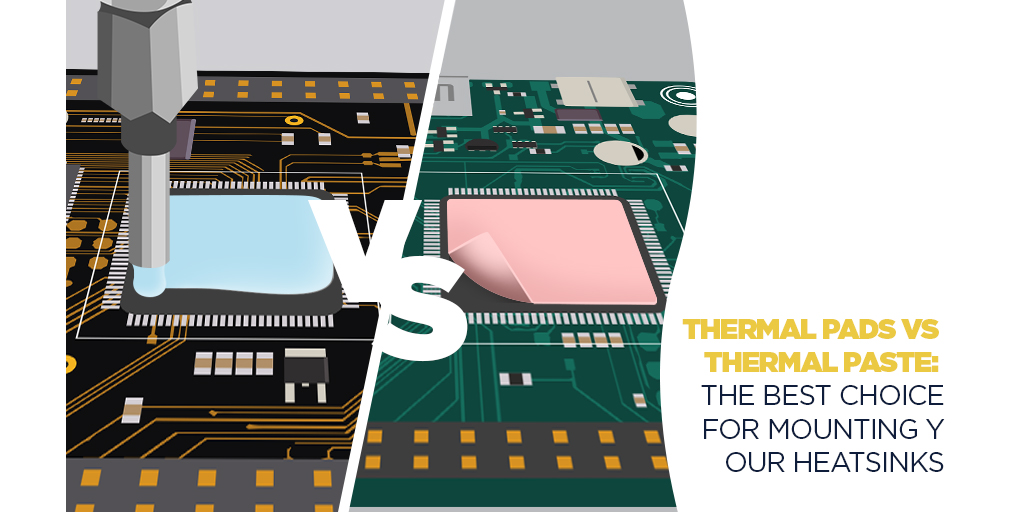Thermal Pads or Paste: Which Is Better for Your PC?
Maintaining optimal temperatures is critical for the performance and longevity of your computer components, especially CPUs and GPUs. When it comes to thermal management, you’re faced with a choice: thermal pads or thermal paste. But which is better? Let’s explore their differences, advantages, and ideal use cases to help you decide.
What Are Thermal Pads and Thermal Paste?
Thermal Pads:
Thermal pads are pre-formed sheets made of a thermally conductive material. They are typically used to transfer heat between a heat source (like a CPU or GPU) and a heatsink.
- Material: Made of silicone, graphite, or other conductive compounds.
- Form: Comes in varying thicknesses and sizes.
- Application: Applied by placing them directly between the surfaces.
Thermal Paste:
Thermal paste (or thermal compound) is a liquid or semi-liquid substance that fills microscopic gaps between a heat source and a heatsink to improve heat transfer.
- Material: Composed of metal oxides, ceramic, or liquid metal.
- Form: Comes in a tube or syringe for manual application.
- Application: Applied as a thin layer to ensure even coverage.
Key Differences Between Thermal Pads and Paste
| Feature | Thermal Pads | Thermal Paste |
|---|---|---|
| Ease of Use | Easy to apply; no mess | Requires precision |
| Durability | Long-lasting; reusable | Needs reapplication over time |
| Performance | Moderate heat conductivity | High heat conductivity |
| Custom Fit | Fixed thickness | Conforms to surfaces |
| Maintenance | Low; often maintenance-free | Requires periodic reapplication |
Advantages of Thermal Pads
-
Ease of Installation:
- Pre-cut and ready to use without requiring precise application.
-
Reusable:
- Can be reused if components are removed or repositioned.
-
Durability:
- Resistant to wear and degradation over time.
-
Non-Conductive:
- Safer for beginners since it doesn’t risk short-circuiting.
Advantages of Thermal Paste
-
Superior Thermal Conductivity:
- Fills microscopic gaps more effectively for better heat transfer.
-
Custom Application:
- Can be applied in varying amounts to suit different setups.
-
Better for High-Performance Systems:
- Ideal for overclocked CPUs or high-power GPUs.
When to Use Thermal Pads
- Budget Builds: Great for cost-effective setups.
- Pre-Built Systems: Often included by default in OEM systems.
- Components with Uneven Surfaces: Works well when surfaces are not perfectly flat.
- Low-Maintenance Environments: Suitable for systems requiring minimal upkeep.
When to Use Thermal Paste
- Overclocking Enthusiasts: For those pushing their systems to the limit.
- Gaming Rigs: Ensures maximum performance for high-demand GPUs and CPUs.
- Custom Builds: Ideal for enthusiasts who prioritize optimal cooling.
- High-Performance Applications: Great for workstations or servers under heavy loads.
How to Apply Thermal Pads and Paste
Applying Thermal Pads:
- Clean the surfaces thoroughly.
- Remove the protective film from the pad.
- Place the pad between the heat source and heatsink.
- Ensure proper alignment.
Applying Thermal Paste:
- Clean both surfaces with isopropyl alcohol.
- Apply a pea-sized amount of paste to the CPU or GPU.
- Spread evenly using a card or let the heatsink pressure spread it.
- Attach the heatsink and secure it.
Pros and Cons of Each
Thermal Pads:
- Pros:
- Easy to use
- Durable and reusable
- Safe for beginners
- Cons:
- Moderate thermal conductivity
- Fixed thickness limits versatility
Thermal Paste:
- Pros:
- High thermal efficiency
- Customizable application
- Better for extreme conditions
- Cons:
- Requires periodic maintenance
- Can be messy to apply
Thermal Pads vs. Paste: Which Is Better?
Choose Thermal Pads if:
- You’re a beginner or want an easy installation.
- You prioritize durability and low maintenance.
- You’re working with pre-built systems or budget setups.
Choose Thermal Paste if:
- You need maximum thermal performance.
- You’re building a high-performance or gaming system.
- You’re comfortable with maintenance and precise application.
Conclusion
Both thermal pads and thermal paste have their strengths and are suitable for different scenarios. For casual users or those prioritizing ease of use, thermal pads are a great choice. However, if you’re chasing peak performance, thermal paste is the way to go.
Evaluate your needs, skill level, and the requirements of your build before making a decision. With the right thermal solution, your PC will stay cool and perform at its best!
FAQs
1. Can I use thermal pads and paste together?
- It’s not recommended, as they are designed to be used separately for optimal performance.
2. How often should thermal paste be replaced?
- Typically every 2-3 years, or sooner for high-performance systems.
3. Are thermal pads reusable?
- Yes, but their effectiveness may reduce after multiple uses.
4. Do I need to clean off old thermal paste before reapplying?
- Yes, always clean the surfaces thoroughly to ensure proper heat transfer.
Choose wisely and keep your system running cool!

Post a Comment